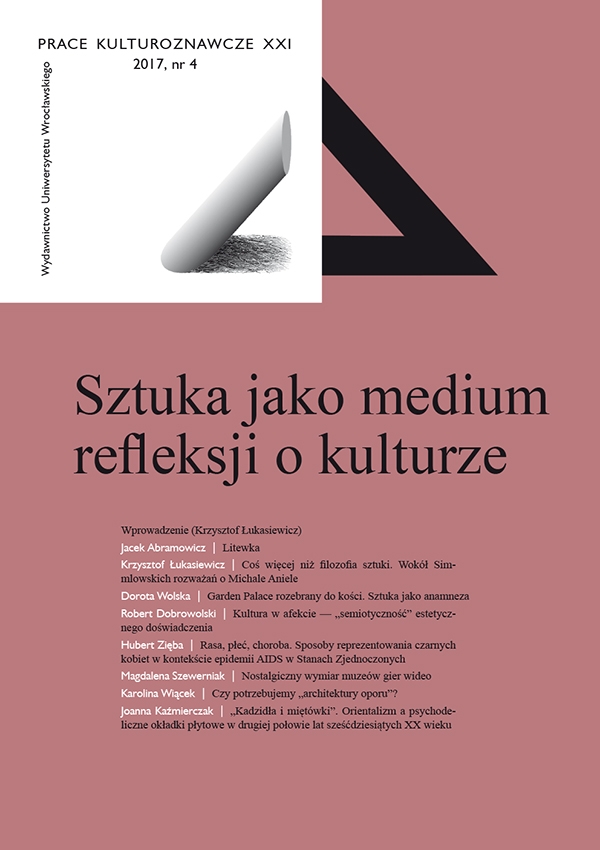

II

Race, sex, disease. Modes of representing black women in the context of the AIDS epidemic in the United States
In this article I try to outline the ways of representing black women in the context of the AIDS epidemic in the United States. The point of departure for prospecting for such images is the development of the feminist thought and women cinema practices, described by E. Ann Kaplan and Alexandra Juhasz, which diverge from a unified category of women towards a multicultural aspect of femininity. In the face of rendering HIV/AIDS dominantly from a white male perspective in the most popular motion pictures about the disease, I begin with Georges Didi-Huberman assumption, according to which, under a layer of popular images of disasters, there are always different depictions yet to be discovered. Referring to the concept of minoritarian strategies, formulated by Gilles Deleuze and Felix Guattari, I attempt to make a formal and stylistic analysis of four films, two documentaries and two features. Simultaneously I try to demonstrate that actions taken by women involved in different levels of film production cross the traditional opposition between the mainstream and independent cinemas. The films analyzed in this article are: Sandra’s Web: A Mother’s Diary 1996, dir. Beverly Peterson, Wilhemina’s War 2015, dir. June Cross, Life Support 2007, dir. Nelson George, and Precious 2009, dir. Lee Daniels.